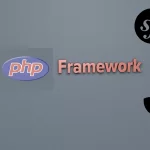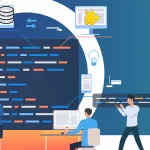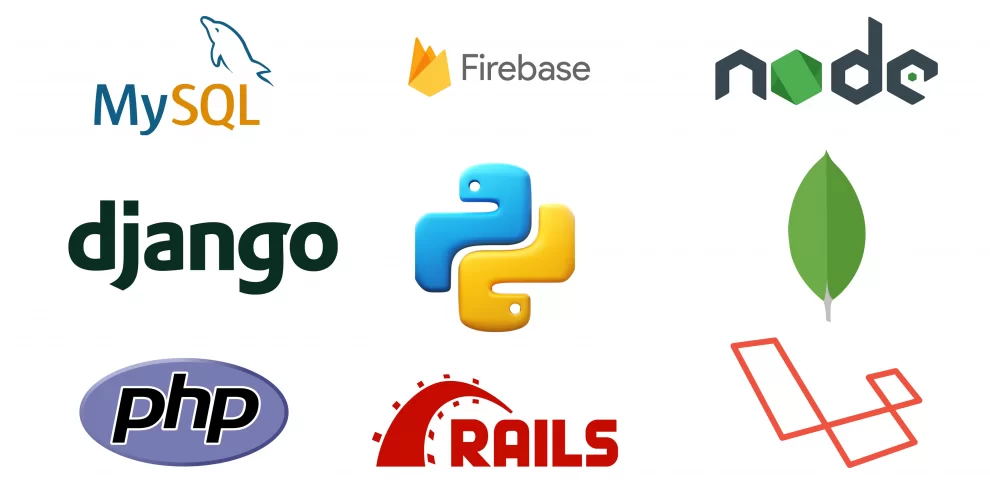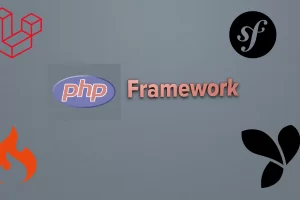In the ever-evolving landscape of software development, back-end tools play a crucial role in shaping the efficiency, reliability, and overall performance of applications. For developers in the United States, utilizing the most effective and advanced tools is not just a choice but a necessity. As 2024 unfolds, the tech arena witnesses a surge in cutting-edge back-end tools, each designed to streamline development processes and elevate the final product. In this exploration, we will navigate through the top back-end tools specifically tailored for US developers, shedding light on their features, functionalities, and how they empower developers to craft exceptional digital solutions. Let’s embark on this enlightening journey to discover the tools that are set to redefine back-end development in the United States.
Key Back-End Developer Skills for 2024
As technology continues its rapid evolution, the role of back-end developers becomes increasingly pivotal in shaping the digital landscape. They are the architects and engineers behind the scenes, crafting the foundation upon which the entire application is built. In 2024, the demand for proficient back-end developers in the United States is soaring, driven by the insatiable need for robust and scalable web and mobile applications that can handle the complexities of modern user interactions and data management.
To thrive in this dynamic environment, back-end developers must possess a well-rounded skill set that enables them to build secure, efficient, and innovative solutions. The back-end is not just about ensuring the application runs smoothly; it’s about creating an ecosystem that can adapt, scale, and integrate seamlessly with various front-end technologies and third-party services. In essence, they are tasked with laying the groundwork for exceptional user experiences.
Proficiency in Internal Programming Languages
At the heart of a proficient back-end developer’s toolkit lies a deep understanding and mastery of internal programming languages. In 2024, the landscape continues to be shaped by languages specifically tailored for back-end development. These languages are designed to optimize server-side operations and enhance application performance. Here are some key internal programming languages that are vital for back-end developers:
Python:
Python remains a dominant force in back-end development in 2024. Known for its simplicity, versatility, and vast ecosystem of libraries and frameworks, Python enables developers to create scalable and maintainable applications. Popular frameworks like Django and Flask further streamline development, making Python a top choice for building robust back-end systems.JavaScript (Node.js):
JavaScript, traditionally associated with front-end development, has gained immense popularity on the back end with the advent of Node.js. In 2024, Node.js continues to be a go-to choice for its event-driven architecture, allowing for highly scalable and efficient applications. Its asynchronous nature significantly enhances I/O-bound operations, making it ideal for real-time applications.Ruby:
Ruby, coupled with the Ruby on Rails framework, remains a strong contender in the back-end development realm. Renowned for its developer-friendly syntax and rapid development capabilities, Ruby on Rails empowers developers to build robust, maintainable, and feature-rich applications. It remains a prevalent choice in the start-up ecosystem.Java:
Java continues to be a workhorse in the back-end development domain. Its robustness, platform independence, and extensive community support position it as a dependable choice for developing scalable enterprise-grade applications. Java frameworks like Spring and Hibernate further enhance productivity and maintainability.C# (ASP.NET):
C# remains a prominent language for back-end development, especially in the context of Microsoft’s ASP.NET framework. In 2024, ASP.NET continues to evolve, providing a comprehensive framework for building dynamic and secure web applications. C# offers strong typing, performance optimization, and integration capabilities, making it a suitable choice for various back-end needs.
Back-end developers proficient in these internal programming languages possess a solid foundation to build efficient, scalable, and secure applications. These languages empower developers to craft the intricate logic and functionality that power the back-end of modern web and mobile applications, ensuring seamless user experiences.
Also Read: Top Node.js development companies in the US
Database Management: Handling Data Effectively
Effective database management is a cornerstone of successful back-end development. Databases store, organize, and manage vast amounts of data critical for applications to function optimally. In 2024, the complexity of applications necessitates a nuanced understanding of both traditional SQL (Structured Query Language) and modern NoSQL (Not Only SQL) databases. Let’s explore these vital aspects of database management:
SQL Databases:
PostgreSQL:
PostgreSQL is a powerful, open-source relational database management system known for its advanced features, extensibility, and adherence to SQL standards. In 2024, it continues to be a popular choice for applications that require complex queries, transactions, and data integrity.MySQL/MariaDB:
MySQL and its fork MariaDB are widely used relational databases known for their speed, reliability, and ease of use. They remain prevalent in various applications, from content management systems to e-commerce platforms, due to their robustness and community support.SQL Server:
Microsoft SQL Server is a robust relational database management system known for its integration with the Microsoft ecosystem. In 2024, it is a preferred choice for enterprise-level applications due to its scalability, security features, and seamless integration with other Microsoft technologies.
NoSQL Databases:
MongoDB:
MongoDB, a prominent document-oriented NoSQL database, continues to gain traction in 2024. Its flexibility, scalability, and ability to handle unstructured data make it ideal for applications with evolving schemas and high read/write operations.Cassandra:
Apache Cassandra, a wide-column NoSQL database, excels in handling massive amounts of data across distributed and commodity servers. In 2024, its ability to provide high availability and fault tolerance makes it a valuable asset for applications dealing with large-scale data.Redis:
Redis, an in-memory data structure store, is a key-value NoSQL database used for caching and real-time analytics. Its lightning-fast performance and versatility in handling various data structures make it a preferred choice for real-time applications.
Leveraging Frameworks for Enhanced Efficiency
Frameworks are the scaffolding upon which back-end developers build robust and feature-rich applications. They streamline the development process, encourage best practices, and provide pre-built modules, saving time and effort. In 2024, several frameworks continue to dominate the back-end development landscape, each catering to specific needs and preferences of developers. Let’s explore some of the top frameworks for back-end development in 2024:
Django:
Django remains a force to be reckoned with in the world of back-end development. Known for its “batteries-included” philosophy, it simplifies and accelerates the development of secure and maintainable web applications. In 2024, Django’s emphasis on rapid development, scalability, and strong community support make it a standout choice.Flask:
Flask, a lightweight and versatile microframework, continues to gain popularity in 2024. It allows developers to design and build applications with fine-grained control, making it suitable for both small and large-scale projects. Flask’s flexibility and simplicity appeal to developers seeking a minimalistic yet powerful framework.Express.js:
Express.js, a minimal and flexible Node.js web application framework, holds a prominent position in the realm of server-side development. Its speed, simplicity, and robust set of features make it ideal for building scalable and efficient applications, particularly those requiring real-time interactions.Ruby on Rails:
Ruby on Rails, often referred to as Rails, is a powerful and developer-friendly framework for building web applications using Ruby. In 2024, its convention-over-configuration approach and emphasis on rapid development continue to make it a popular choice, especially among start-ups and small teams.
Also Read: Hire Dedicated Node.js Developers in the US: Benefits and Considerations
Essential Knowledge for Backend Developers in 2024
In 2024, a backend developer’s skill set extends beyond mere programming prowess. Understanding how to efficiently manage data and databases is crucial. Proficiency in both SQL and NoSQL databases, such as PostgreSQL, MySQL, MongoDB, and Cassandra, is essential. Backend developers need to comprehend when to use each type of database and how to design efficient database schemas to optimize application performance and data storage.
Moreover, a backend developer in 2024 must be well-versed in version control systems, particularly Git. Understanding Git workflows and employing them effectively ensures streamlined collaboration and efficient code management within development teams. This proficiency is fundamental for seamless integration of code changes and collaboration on projects of any scale.
Security consciousness is another vital aspect. With cyber threats on the rise, backend developers must be knowledgeable about various security measures. This includes data encryption techniques, secure authentication and authorization mechanisms, and awareness of potential vulnerabilities and how to mitigate them. Embedding security measures within the application’s architecture is paramount to ensure the safety of user data and the overall system.
Mastering API Integration and Efficient Server Operations
Backend developers in 2024 must excel in working with APIs (Application Programming Interfaces). APIs serve as the bridge for communication between different software systems. It’s crucial for backend developers to comprehend how to design, create, and consume APIs effectively. Understanding RESTful API principles and best practices is paramount, enabling the creation of intuitive, scalable, and efficient APIs. Proficiency in integrating third-party services and leveraging APIs to enhance application functionality is a key aspect. This integration capability is central to building comprehensive, interconnected, and feature-rich applications.
Additionally, a profound understanding of server operations is fundamental. Backend developers need to know how to set up, configure, and manage servers efficiently. This involves deploying applications on servers, ensuring optimal performance, managing server resources, and addressing potential scaling needs. Familiarity with serverless architecture, where applications run in response to events, allows for cost-effective, scalable solutions. Moreover, backend developers should possess knowledge of continuous monitoring and troubleshooting, ensuring that servers operate smoothly and reliably.
Data Structures and Algorithms Mastery
Backend developers in 2024 must master data structures and algorithms, fundamental to efficient application performance. Proficiency in various data structures and algorithms (sorting, searching, dynamic programming) is vital, allowing developers to optimize operations, enhance code readability, and improve the scalability of applications. Well-structured code built upon sound data structure principles ensures not only optimal performance but also smoother scalability, enabling the backend to handle increasing user loads and larger data volumes effectively.
A solid grasp of data structures and algorithms empowers developers to tackle complex problems. It encourages innovative thinking, fostering unique solutions and features that push the boundaries of what technology can achieve. Whether streamlining code, enhancing scalability, or spurring innovation, data structures and algorithms are the cornerstone of efficient and effective backend development in 2024, shaping the landscape of modern applications.
Version Control System
Efficient Collaboration and Tracking Changes:
Version Control Systems (VCS) are a lifeline for backend developers. They enable efficient collaboration within development teams by providing a centralized platform to track and manage changes to the codebase. Developers can work on different parts of the project simultaneously, seamlessly merging their contributions while preserving the integrity of the code. This ensures that everyone is on the same page, minimizing conflicts, and ultimately enhancing productivity and project organization.Code Integrity and Disaster Recovery:
VCS also plays a critical role in maintaining the integrity of the codebase. It acts as a safety net, allowing developers to revert to previous versions or branches in case of errors or unintended changes. This capability is fundamental for disaster recovery, ensuring that even if errors occur, the project can be restored to a functional state. Version control essentially provides a safety mechanism that instills confidence, allowing developers to experiment and innovate while having the assurance of a robust recovery process. In 2024, understanding and utilizing version control systems is a non-negotiable skill for efficient and collaborative backend development.
In Conclusion: Navigating the Dynamic Backend Landscape
In 2024, backend developers stand at the intersection of tradition and innovation. Beyond conventional responsibilities, they are now architects of efficiency, guardians of security, and facilitators of seamless collaboration. Mastery in programming languages, frameworks, and databases is just the beginning. With the surge in cloud computing and the increasing reliance on APIs, a deeper understanding of these technologies is indispensable. Moreover, proficiency in data structures and algorithms fuels elegant solutions and underpins efficient applications.
In this era of dynamic change, the backend developer’s role has evolved into a dynamic blend of technical prowess, creative problem-solving, and effective collaboration. Being future-ready entails a commitment to lifelong learning, embracing emerging technologies, and adapting to new paradigms. The backend developer of 2024 is not just a coder; they are the backbone of digital innovation, driving progress and shaping the future of technology through skill, collaboration, and a relentless passion for staying ahead of the curve. As the digital landscape continues to evolve, so too does the role of the backend developer, poised to navigate and thrive in the exciting times that lie ahead.















